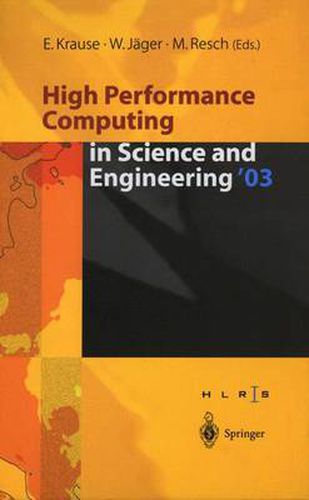Readings Newsletter
Become a Readings Member to make your shopping experience even easier.
Sign in or sign up for free!
You’re not far away from qualifying for FREE standard shipping within Australia
You’ve qualified for FREE standard shipping within Australia
The cart is loading…






This title is printed to order. This book may have been self-published. If so, we cannot guarantee the quality of the content. In the main most books will have gone through the editing process however some may not. We therefore suggest that you be aware of this before ordering this book. If in doubt check either the author or publisher’s details as we are unable to accept any returns unless they are faulty. Please contact us if you have any questions.
Prof. Dr. Egon Krause Aerodynamisches Institut RWTH Aachen Wullnerstr. zw. 5 u. 7, D-52062 Aachen Prof. Dr. Willi Jager Interdisziplinares Zentrum fur Wissenschaftliches Rechnen Universitat Heidelberg 1m Neuenheimer Feld 368, D-69120 Heidelberg Prof. Dr. Michael Resch Hi::ichstleistungsrechenzentrum Stuttgart Allmandring 30, D-70550 Stuttgart The High-Performance Computing Center Stuttgart (HLRS) underwent dra- matic changes during the last year. At the beginning of 2003 the Center was separated from the Computing Center of Stuttgart University and turned into an independent central unit of Stuttgart University. Last March the Land Baden-Wurttemberg shaped up her strategy of cooperation and formed of a new Center of Competence in High-Performance Computing in Baden- Wurttemberg by aS80ciating HLR Stuttgart with the SSC Karlsruhe. At the present time the HLRS is preparing its decision for a new computer system to be planned to be operative in 2005. A safe decision is difficult to arrive at since the offers of the vendors of high-performance computers are continuously and rather rapidly changing. At the lower end the microprocessor based systems are attacked by clusters ofPCs. The superior price-performance VI Preface ratio makes such rather inexpensive systems attractive for a variety of appli- cations, most of which are latency bound. At the upper end microprocessor based systems are pressured by vector-based systems. The latter have seen a revival nourishing on the success and political impact of the earth simulator project.
$9.00 standard shipping within Australia
FREE standard shipping within Australia for orders over $100.00
Express & International shipping calculated at checkout
This title is printed to order. This book may have been self-published. If so, we cannot guarantee the quality of the content. In the main most books will have gone through the editing process however some may not. We therefore suggest that you be aware of this before ordering this book. If in doubt check either the author or publisher’s details as we are unable to accept any returns unless they are faulty. Please contact us if you have any questions.
Prof. Dr. Egon Krause Aerodynamisches Institut RWTH Aachen Wullnerstr. zw. 5 u. 7, D-52062 Aachen Prof. Dr. Willi Jager Interdisziplinares Zentrum fur Wissenschaftliches Rechnen Universitat Heidelberg 1m Neuenheimer Feld 368, D-69120 Heidelberg Prof. Dr. Michael Resch Hi::ichstleistungsrechenzentrum Stuttgart Allmandring 30, D-70550 Stuttgart The High-Performance Computing Center Stuttgart (HLRS) underwent dra- matic changes during the last year. At the beginning of 2003 the Center was separated from the Computing Center of Stuttgart University and turned into an independent central unit of Stuttgart University. Last March the Land Baden-Wurttemberg shaped up her strategy of cooperation and formed of a new Center of Competence in High-Performance Computing in Baden- Wurttemberg by aS80ciating HLR Stuttgart with the SSC Karlsruhe. At the present time the HLRS is preparing its decision for a new computer system to be planned to be operative in 2005. A safe decision is difficult to arrive at since the offers of the vendors of high-performance computers are continuously and rather rapidly changing. At the lower end the microprocessor based systems are attacked by clusters ofPCs. The superior price-performance VI Preface ratio makes such rather inexpensive systems attractive for a variety of appli- cations, most of which are latency bound. At the upper end microprocessor based systems are pressured by vector-based systems. The latter have seen a revival nourishing on the success and political impact of the earth simulator project.